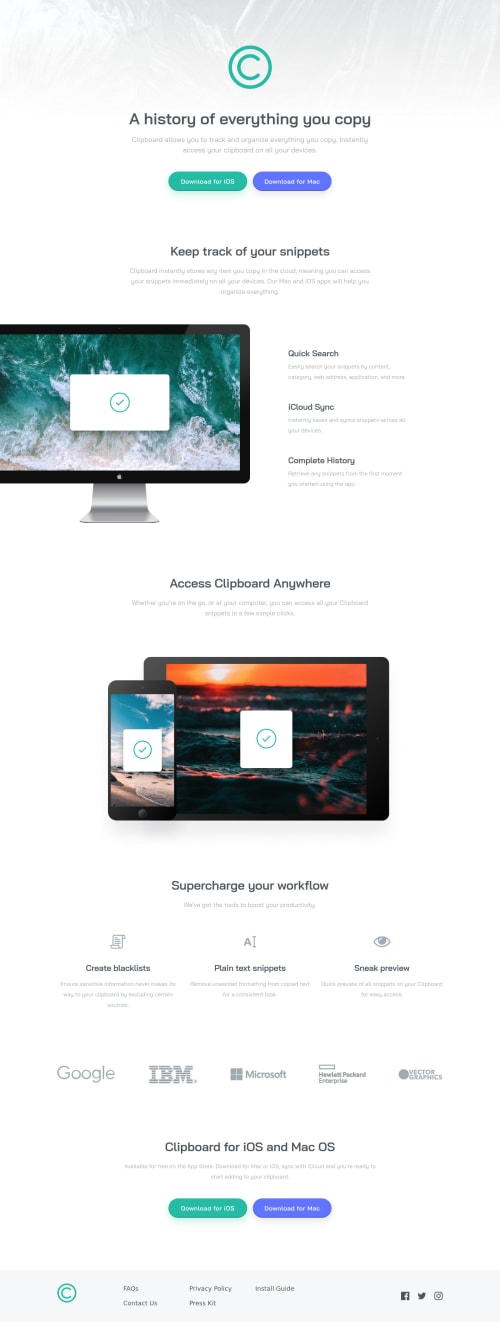Submitted about 3 years agoA solution to the Clipboard landing page challenge
Responsive Landing Page using ReactJS an TailwindCSS
react, tailwind-css
@0x41-li

Solution retrospective
Check this out!
Code
Loading...
Please log in to post a comment
Log in with GitHubCommunity feedback
No feedback yet. Be the first to give feedback on Ali Sbane's solution.
Join our Discord community
Join thousands of Frontend Mentor community members taking the challenges, sharing resources, helping each other, and chatting about all things front-end!
Join our Discord